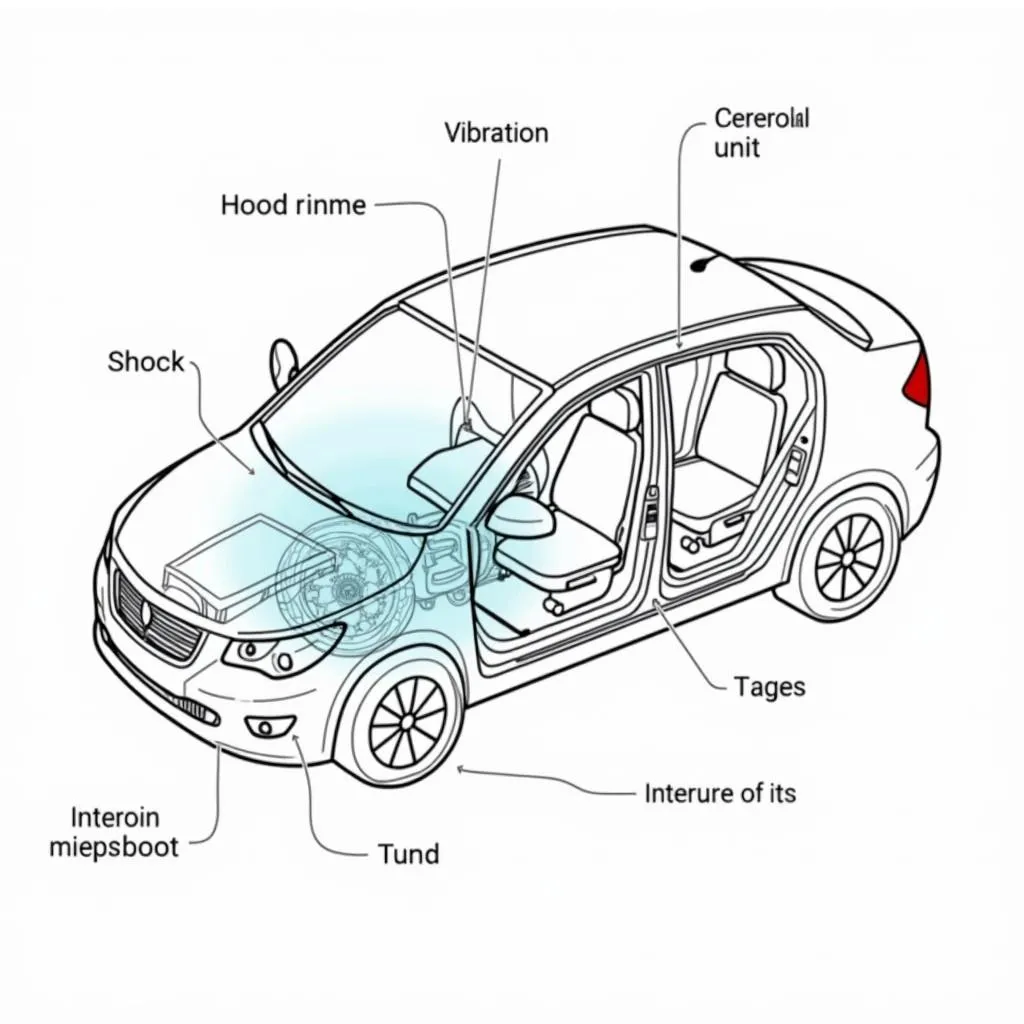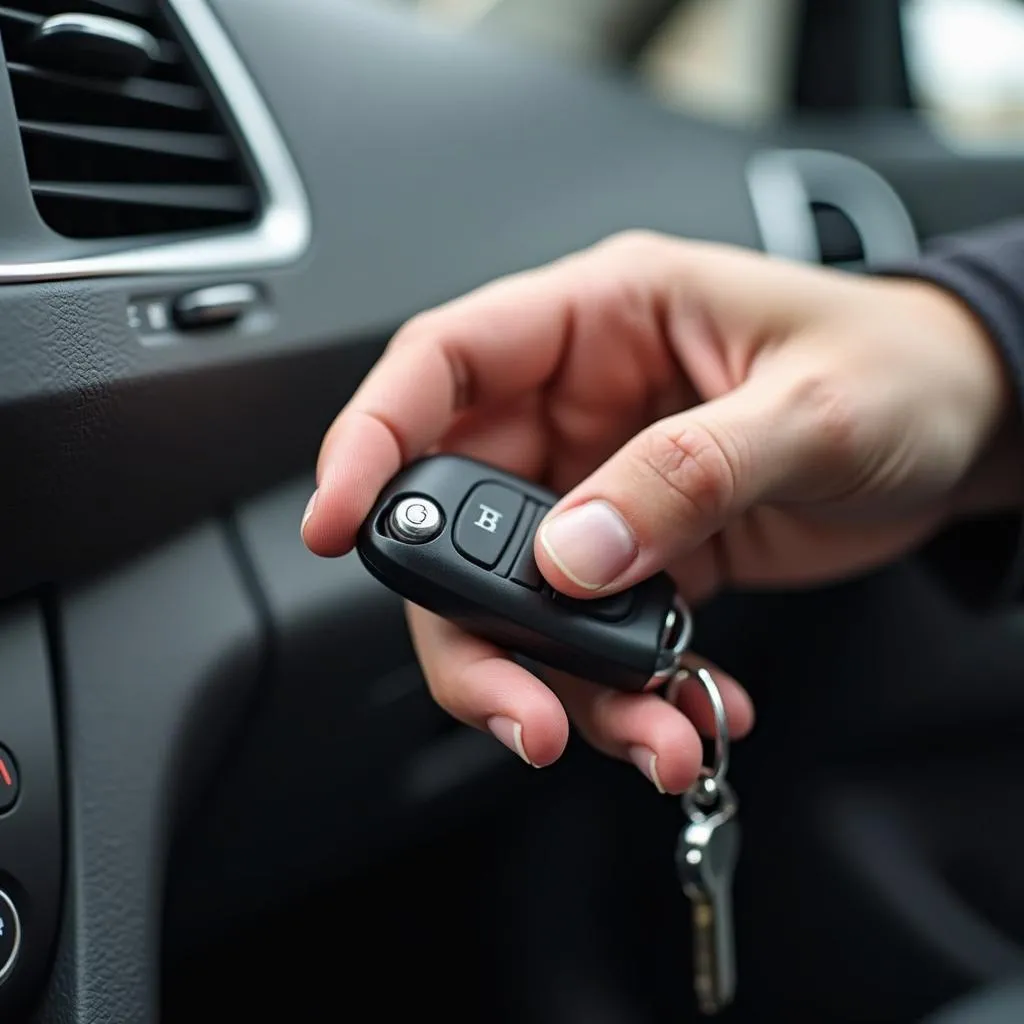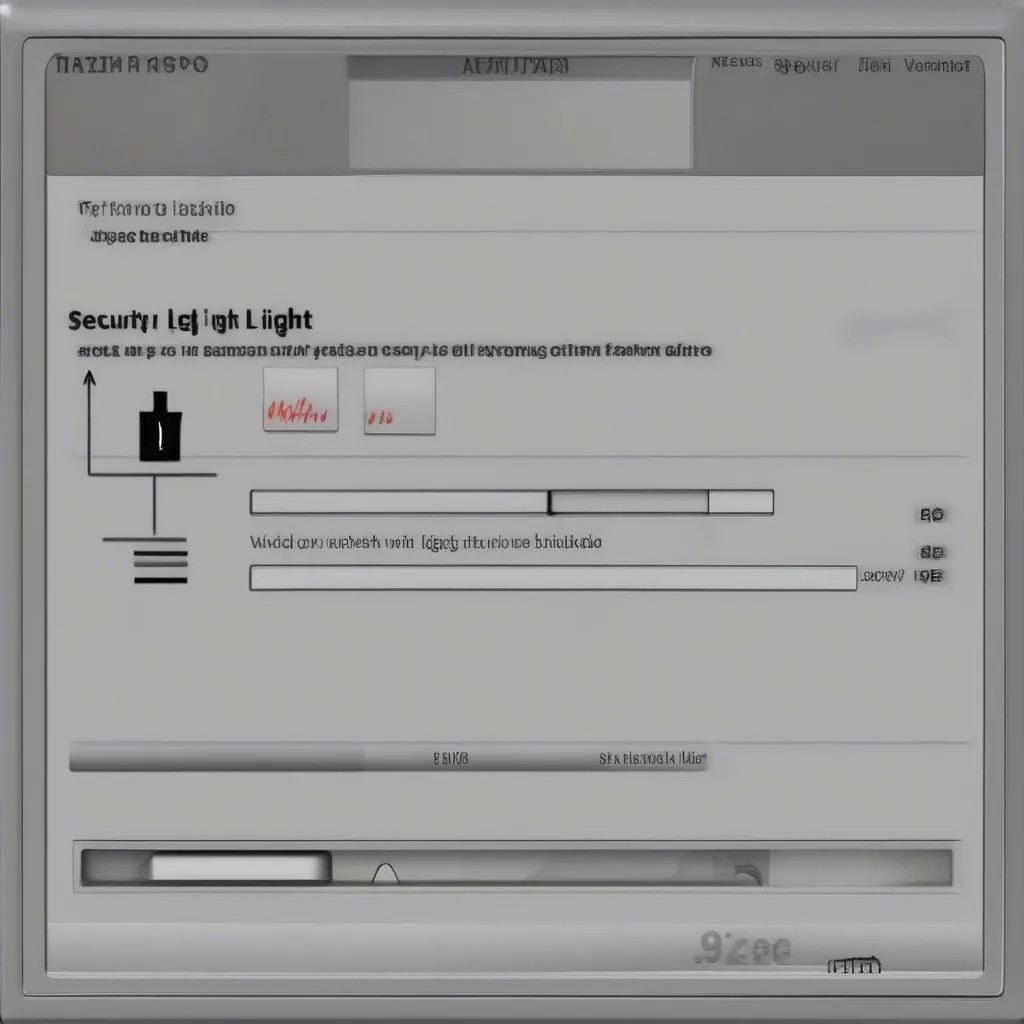Have you ever walked out to your car only to be met with the blaring alarm and flashing lights? That’s your car’s anti-theft system hard at work, deterring any potential thieves. But what exactly triggers this system, and how does it function to protect your vehicle?
This article will delve into the intricacies of car anti-theft systems, explaining how they work and the common triggers that set them off. We’ll also explore some troubleshooting tips and answer frequently asked questions to help you gain a comprehensive understanding of this crucial security feature.
Understanding the Triggers: What Sets Off a Car Alarm?
Modern car anti-theft systems are more sophisticated than ever, employing a combination of sensors and technologies to safeguard your vehicle. Here’s a breakdown of the most common triggers:
1. Unauthorized Entry
Most car alarms are armed when you lock your car using either your key fob or the physical key. If someone attempts to force open the doors, hood, or trunk without disarming the system, the sensors will detect the intrusion and sound the alarm.
2. Vibration or Shock Sensors
These sensors are designed to detect any unusual movement or impact on the vehicle’s body. If someone tries to break a window, tow your car, or even bump into it forcefully, the sensors will interpret these vibrations as a potential threat and activate the alarm.
3. Battery Disconnection
Disconnecting the car battery is a common tactic thieves use to disable the alarm system. However, many modern vehicles are equipped with backup battery systems or sensors that will trigger the alarm if they detect a sudden loss of power.
4. Interior Movement Detection
Some advanced anti-theft systems feature interior motion sensors. These sensors can detect movement inside the cabin, such as someone reaching through a broken window, and trigger the alarm accordingly.
 Car anti-theft system diagram
Car anti-theft system diagram
Identifying a False Alarm: How to Tell if it’s a Real Threat
While the anti-theft system is designed to protect your vehicle, it’s not uncommon to experience false alarms. These can occur due to various factors, including:
- Accidental triggering by the owner: This often happens when you accidentally press the panic button on your key fob or if your car key is within range of the vehicle and experiences interference.
- Environmental factors: Strong winds, heavy rain, or even a passing truck can sometimes create vibrations or pressure changes that mistakenly trigger the alarm.
- Faulty sensors: Over time, the sensors in your car alarm system can malfunction, leading to false alarms.
Troubleshooting Your Car Alarm: What to Do When it Goes Off
If your car alarm goes off, the first step is to stay calm and assess the situation. Check for any signs of forced entry or suspicious activity around your vehicle. If you suspect a genuine theft attempt, contact the authorities immediately.
If you believe it’s a false alarm, you can typically disable it by:
- Using your key fob: Pressing the unlock or panic button on your key fob will usually disarm the alarm.
- Inserting the key in the ignition: Turning the key to the “on” position can also reset the alarm system.
 Disabling car alarm with key fob
Disabling car alarm with key fob
If these methods don’t work or you’re experiencing recurring false alarms, it’s best to consult a qualified auto electrician or take your vehicle to a trusted mechanic for diagnosis and repair.
FAQs: Common Questions About Car Anti-theft Systems
Here are some answers to common questions car owners often have about anti-theft systems:
Q: Can I install an aftermarket anti-theft system on my car?
A: Yes, several aftermarket anti-theft systems are available that can enhance your vehicle’s security.
Q: How much does it cost to fix a car alarm system?
A: The cost can vary depending on the issue and the make and model of your vehicle.
Q: Can I turn off the sensitivity of my car alarm?
A: Some car alarms allow you to adjust the sensitivity of the sensors. You can consult your owner’s manual or a qualified technician for assistance.
Remember, regular maintenance and inspections are crucial for ensuring the optimal performance of your car’s anti-theft system.
Need help diagnosing or fixing your car’s anti-theft system? Cardiagtech offers a range of diagnostic tools and software that can help you troubleshoot and resolve issues effectively. Visit our website to learn more about our products and services.
Conclusion
Your car’s anti-theft system is a valuable security feature that provides peace of mind by deterring theft and vandalism. Understanding how the system works, what triggers it, and how to troubleshoot common issues can help you use it effectively and keep your vehicle safe. If you’re experiencing persistent problems with your car alarm, don’t hesitate to seek professional assistance from CARDIAGTECH. Our team of automotive experts is here to help you diagnose and resolve any issues, ensuring your anti-theft system functions flawlessly. Contact us today for expert advice and reliable solutions for all your car security needs!

